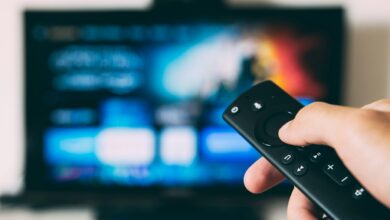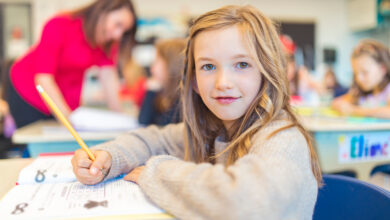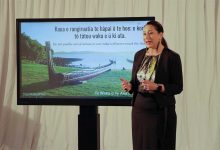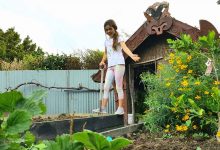Teens learning from home: What to consider
Noho tawhiti, Tū kotahi. Sit at a distance, stand as one.

A joint blog by Karl Summerfield and Madeline Campbell.
The wellbeing of secondary ākonga, kaiako and wider school whānau is an important focus of this post. We explore wellbeing from the perspectives of the secondary learner and kaiako.
We also consider learning itself, and pose some reflective questions to support secondary schools and kaiako with planning. Planning collaboratively, and with compassion, will help us to embark on new ways of working in our secondary schools.
Planning for ākonga wellbeing
Timely, relevant support
In a recent newsletter, Perry Rush, President of the New Zealand Principals Federation said;
What is needed at this time is leadership that has emotional resonance. This is not a time for you to be a transactional leader singularly focused on how learning may continue. It is a time for you to metaphorically wrap your arms around the young people in your care and embrace their families too.
During periods of change we each have questions about what will be different and what will stay the same. Learners will have many questions about the implications of learning from home. Without answers, these questions may create unnecessary anxiety.
For example, here are the questions of five Year 12 students:
- “At our school there hasn’t been a coordinated announcement for students as to how the school will proceed after the holidays. Some students have started planning for themselves”.
- “I’m in the middle of some NCEA assessments, what happens when the teacher can’t supervise them?”
- “Will I have to re-do Year 12? Year 12 is so crucial for University Entrance—it feels more significant than Year 13.”
- “Before the lockdown only one of my teachers had talked to me about what happens when the school closes. Some subjects will work better than others. English class worries me – because it’s hard to see how my teacher’s style will work online”.
- “Lots of kids don’t have support at home. We worry about isolation and how we will pass assessments without support”.
Creating spaces where learners can regularly express concerns and questions will enable kaiako to provide useful and timely support. Working out how to do this remotely will take collaboration. Discussing with ākonga and as a staff what approaches to raising and solving issues will be useful and sustainable.
Another aspect of planning for wellbeing is ensuring that every learner has someone looking out for them. Secondary ākonga will probably be in contact with many different kaiako. When face to face, there are multiple opportunities to have incidental conversations with learners. We notice how they are doing. Teaching online, we can easily miss those cues.
One recommendation is for schools to plan for kaiako—perhaps a form teacher— to take pastoral responsibility for a group of learners and look out for their overall welfare and progress. Again, ask ākonga for their ideas and feedback.
Minimising overload
In this period of change and upheaval, every effort needs to be made to ensure ākonga receive a coordinated, coherent learning experience.
Firstly, out of respect for your learners, settle on a core group of online tools. While new tools might seem cool and exciting, if every kaiako picks a couple of different new tools, ākonga may have to grapple with signing onto, learning, managing and submitting work across many new digital platforms.
Secondly, closely coordinate and monitor learner workload to ensure assignments are staggered and well-supported. This will require coordination and collaboration across departments / faculties and also regular feedback from them.
How do we make sure that no one gets missed? There will be ākonga in every school who are already being supported with their learning or behaviour by specialist staff. Has contact been made with them? We have a collective responsibility to make sure that “learning is inclusive” (New Zealand Curriculum, 2007, p. 9), and available to all. Can we work with those ākonga to see what they need and what barriers they face?
Here are some other questions for consideration:
– What anxieties and stresses are ākonga managing? E.g missing loved ones, feeling unsafe or vulnerable, losing an after school job?
– Is your school confident that all learning tasks can be accessed, and completed, with the tools available?
– How are ākonga structuring their days, and planning to meet deadlines?
– Do ākonga have the skills to solve/work around any technical barriers related to their learning?
– Are ākonga able to devote “school time” to their studies, or do whānau circumstances mean they now have other responsibilities such as minding tēina?
– Are senior ākonga being reassured and supported, as they face unpredictable changes to their high-stakes learning?
Designing learning for new environments
Some aspects of learning remotely actually work better than equivalent face to face options. Tony Cairns from Wellington High School points out that we’ve known there are benefits to online learning:
“We’ve been trying to do this [remote learning] for years. Now we have to!”
Use the benefits of the remote environment to your advantage. Some activities that seemed impossible to do online are being successfully adapted by creative kaiako. Here are some examples of what might work well, and what might be challenging as you move online.
| Works well—maybe even better—online | Harder to do online |
| Collaborative learning | Hands on experiences, like in science or technology |
| Personalised and differentiated learning | Education outside the classroom, including class trips |
| Metacognition – thinking about the thinking | Teachable moments |
| Making learning available anywhere and anytime | Group discussions (they are possible, but have different etiquette online) |
| Multimodal learning | Meeting as a whole community (assemblies etc…) |
| Ongoing, timely feedback | Co-curricular activities |
Like ākonga, kaiako will also be embracing new ways of working. This creates a unique opportunity for kaiako and ākonga together to embrace “Learning to learn”, one of the principles of the New Zealand Curriculum (p. 9).
It is also an opportunity to explore new ways of developing the classroom learning culture. But remember, we are in extraordinary circumstances right now. Remind ākonga that it’s OK to start slowly, make mistakes and have off-days—they’re learning how to learn in a whole new space while navigating learning in their own homes surrounded by extended whānau.
Be proactive and open to partnering with learners to find suitable resources, and teaching and learning approaches. Creating opportunities for them to invest in the development of their online learning will generate greater engagement and connection. This also promotes socially constructed learning, an element that can get overlooked in online learning.
Encourage learners to reflect on how their learning is going. Finding solutions to any issues they identify is also really valuable, but make time to celebrate the things that go well too.
Some ākonga will thrive in the remote learning environment, maybe ones who weren’t engaged in a traditional classroom setting. Can you work with them to find out what has made learning ‘click’? Maybe they can help us to adapt our practice for those who are finding remote learning harder.
Ordinarily we know our ākonga differ in many ways that are fundamental to learning. Variability in prior knowledge, experiences, motivations, interests and beliefs will influence how each individual learns (Dumont et al., 2016, p.7). The Covid-19 situation has created an additional set of circumstances that must also be taken into account. As we approach designing for remote learning, how will we ensure every learner has access to learning in a way that works for them and their whānau?
Some prompting questions for consideration:
– What processes do we have in place to ensure every learner has what they need to access and participate in learning in a way that works for them?
– How will we support ākonga who were previously disengaged in learning?
– What are our plans for ākonga that may require learning support assistance or utilise assistive technologies?
– How can we set up a buddy system, or a tuākana tēina arrangements, to support and stretch learners?
– How will we recognise and celebrate remarkable efforts in a meaningful way?
– How could you use digital tools for multimodal presentation of subject content?
– How can you leverage digital options for ākonga to act on, create, and express their understanding of new content?
Planning to keep kaiako healthy and safe
Moving to online teaching will be an extraordinary learning curve for kaiako, even if they are familiar and confident using digital tools and virtual spaces. Two key areas to provide support are related to managing workload and safe practice online.
Managing workload
To avoid burnout and overload, it is important that kaiako look after themselves too. Robin Sutton, Principal at Hornby High School, points out:
“Teachers are rescuers, and the temptation to just keep going because your students need you is very strong.”
Working in collaborative teams will create a structure for staying connected, negotiating and managing the workload, and to manaaki each other. Tony Cairns describes manaakitanga as practised by Wellington High School:
“It’s caring about the wairua, ora, health and bubbles of our staff and students – it is more than emails, phone calls, texts and hangouts – it is real genuine care for others on our teams and in our school.”
Establish shared expectations, and set some constraints, around when to be available. This can also help maintain some boundaries and define the end of the work day.
Here are some other approaches currently being adopted by schools:
– Kaiako available at the times they are normally timetabled for classes. Ākonga know they can contact kaiako at those times and they’ll be ready to engage with them. Also ensure ākonga are given clear timeframes indicating when staff are not available.
– Regular connection times for colleagues so they can work together to co-construct resources, and have discussions around issues they face or successes they enjoy.
– Less content over longer time frames. Avoid preparing and teaching 20 individual online classes per week as it is unsustainable. Reduce direct teaching and facilitate collaborative, and student-led activities.
– Ākonga who are working collaboratively using a class set of notes supported by multiple media, and asking and answering questions in class forums or discussion spaces.
Safety online
Be alert to the cyber-safety aspects of working remotely. For many kaiako this will be a new way of teaching, and boundaries may quickly become blurred.
Netsafe NZ has released 14 tips to guide educators implementing remote learning, which could form the basis of an online discussion with staff.
Some reflective questions to consider:
– Is it OK for ākonga to know kaiako cell phone numbers so they can text or call?
– Is it OK for kaiako to be interacting with ākonga on social media?
– What should kaiako do if they see something they shouldn’t have when video-conferencing with ākonga?
– Is there a process for making sure resources are safe and appropriate for ākonga to access?
– Who do kaiako contact for support with a student who is not respecting established boundaries for appropriate contact for learning support?
In conclusion
Learning is the dynamic interplay of emotion, motivation and cognition. With thoughtful, people-centred planning, this period of learning from home can be a productive and positive experience for both ākonga and kaiako. As facilitators walking alongside schools, we recognise the magnitude of what schools are required to embrace. Do reach out for help. CORE is here to provide support.
Useful resources:
OECD The Nature of Learning, Using Research to Inspire Practice. Practitioners Guide. 2016. Editors Dumont, H., Istance, D., Benavides, F. “A summary of the Nature of Learning, created to highlight the core messages from the full report.”
NZ Principals Federation Newsletter: Issue 10, 2 April 2020 President’s Message – Reminding kaiako of the importance of compassion, well-being and good pedagogy.
Colouring in your Virtual White Spaces. Anne Milne. Blog post 4th April, 2020. “…how will schools develop critical, culturally sustaining content online, and how will this reach the children who need it most?”
Enabling e-Learning – Flipped learning: Make lessons available for ākonga to access from home or school. How to flip your classroom and personalise learning.
Enabling e-Learning – Communication technologies: Tips for kaiako working with a virtual class, and lots of practical resources for setting up and getting started.
Inclusive Education – Reduce barriers for year 9–13 ākonga: Consider how learning feels and works for your ākonga. Ask them for ideas and feedback.
References
Dumont, H., Istance, D., & Benavides, F. (2016). The Nature of Learning: Using Research to Inspire Practice – Practicioners Guide. OECD.
Ministry of Education. (2007). The New Zealand Curriculum (p. 9). Ministry of Education.









